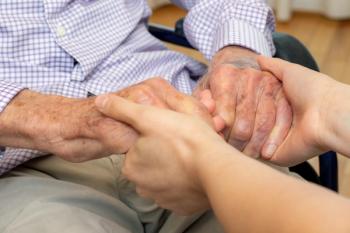
AI Model Identifies Risk of Mortality from Chest X-Rays
53% of people identified as very high-risk died over 12 years.
An artificial intelligence (AI) model could help identify patients at an increased risk of long-term mortality based on their chest X-rays, according to the findings of
The convolutional neural network, named CXR-risk, found that 53% of people it identified as very high-risk for future heart attack, lung cancer or death died over 12 years. In comparison, fewer than 4% of those whom CXR-risk identified as very low-risk died over 12 years.
The model was developed and trained on data sets from two clinical trials — Prostate, Lung, Colorectal and Ovarian Cancer Screening Trial (PLCO) and National Lung Cancer Screening Trial (NLST) — and found that mortality rates for patients with very high-risk scores had an 18- (PLCO) and 15-fold (NLST) higher mortality rate compared to those in the very low-risk category.
“This is a new way to extract prognostic information from everyday diagnostic tests,”
Researchers developed and tested a convolutional neural network to predict long-term mortality, including noncancer death, from chest radiographs.
The primary outcome was all-cause mortality and the secondary outcome was cause-specific mortality.
Researchers built CXR-risk and trained it with more than 85,000 chest X-rays from 42,000 patients from the screening chest radiograph arm of the PLCO. PLCO contained asymptomatic smokers and nonsmokers. Participants were randomized to annual screening versus no screening. The primary finding of the trial was that screening chest radiography did not reduce lung cancer mortality.
The image got paired with whether the person died over a 12-year period. External testing used data from the screening radiography arm of the NLST. Patients in this trail were heavy smokers. CXR-risk learned the features or combinations of features on the chest X-ray image that best predicted health and mortality.
The all-cause mortality rate for nearly 118,000 person-years of follow-up was 13.4% over 12.2 years for PLCO. The NLST had 6.3 follow-up years for nearly 34,000 person-years. The number of deaths per 1,000 person-years was similar in both data sets — between 11 and 12.
In the PLCO group, the very low-risk group had mortality rates of 3.8%. The low-risk group had mortality rates of 7.8%, while moderate was 12.7%, high was 24.9% and very high was 53%.
Rates were similar in the NLST.
Very low-risk had mortality rates of 2.7%, low-risk was 3.8%, moderate was 6.7%, high was 9.8% and very high-risk was 33.9%.
The most common cause of death in the PLCO group was cardiovascular illness. In the NLST data set, the most common cause of death was lung cancer. In both data sets, patients in the very high-risk group were significantly more likely to die of lung cancer, cardiovascular illness and respiratory illness.
Get the best insights in digital health
Related








































